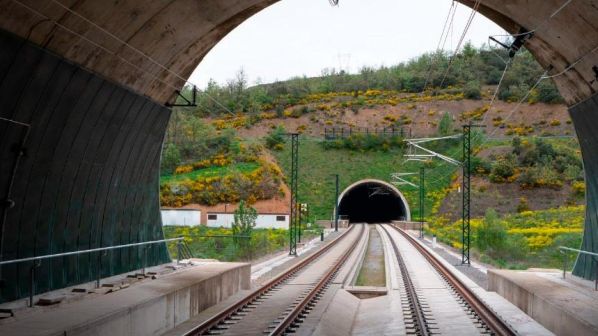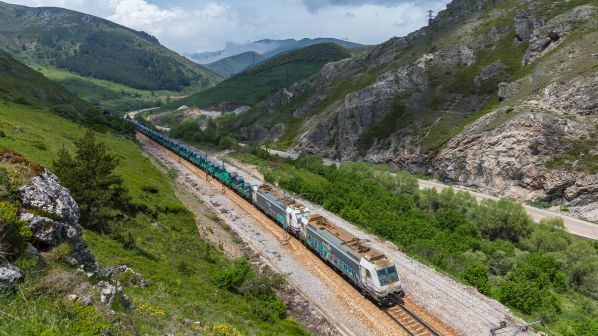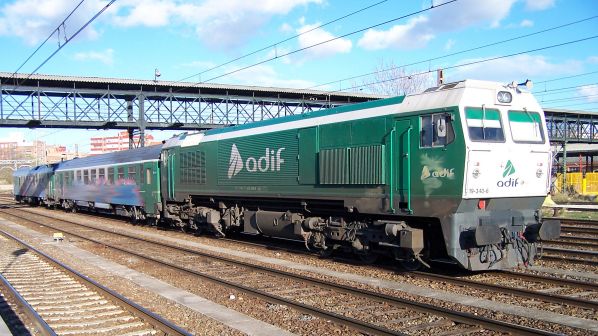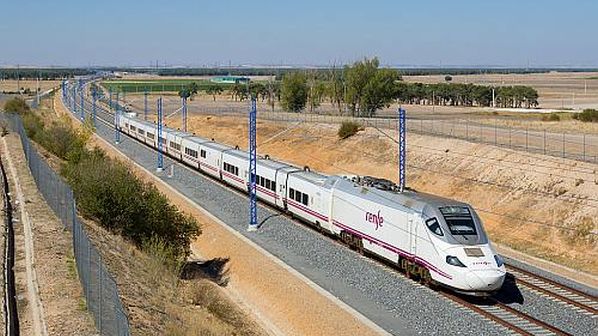KING Felipe VI of Spain joined prime minister, Mr Pedro Sánchez, and minister of transport and sustainable mobility, Mr Óscar Puente, on November 29 to officially open the 50km new alignment between La Robla and Pola de Lena in Asturias which includes the 25km Pajares Base Tunnel.
The new line shortens the distance by rail between León and Oviedo by 37km, and avoids the steeply-graded route over the Pajares pass in the Cantabrian Mountains which has been difficult to operate and maintain, particularly in winter.
With a maximum speed of 275km/h and an average gradient of 1.7%, the new dual-gauge alignment runs in tunnel for a total of 40km or 80% of its length. The longest of the 12 tunnels is the 25km base tunnel itself, which enables trains to negotiate the 500m difference in altitude between Spain’s central plateau and the Asturias region in the north of the country.
The Ministry of Transport and Sustainable Mobility says that construction of the new alignment has been one of the most complex civil engineering projects the world, involving tunnelling at a depth of 1km thorough the complex geology of the Cantabrian Mountains.
Construction of the twin-bore base tunnel saw up to 5000 personnel and five tunnel boring machines (TBM) at work at the same time. Now Europe’s seventh-longest rail tunnel, the base tunnel has 58 pressurised cross-passages every 400m along its length, as well as a 6km emergency access shaft at Buiza and a 3km shaft at Folledo for maintenance.

There are 10 viaducts on the new alignment with a total length of 1.8km. There are four where each track is carried on a separate structure, at Huerna (42m in length), San Blas (129m), Sotiello (135m) and Teso (365m), while that at Campomanes (118m) is unique on the Spanish rail network in having three tracks each on their own separate viaduct.
ERTMS Level 2 has been installed on the new alignment which has been designed for use by both passenger and freight trains. The eastern bore of the base tunnel is dual gauge to accommodate high-speed services while the western bore is 1668mm gauge, with rail laid on sleepers enabling conversion to 1435mm gauge at a later date.
The new alignment with its gentler gradients will enable freight capacity to be increased by up to 15%, as up to four additional wagons can now be added to each train.
There is a gauge-changing installation at Campomanes near Pola de Lena at the northern end of the new alignment, as well as passing loops at Campomanes and at La Robla at the southern end.
Renfe began operating passenger services over the new line on November 30, cutting 1h 3min off the journey time between Madrid and Oviedo. Since bookings opened on November 2, a total of 70,000 tickets had been sold for travel on high-speed Alvia services to destinations in Asturias, which are expected to carry 1.25 million passengers in the first year.
Further improvements are scheduled for the first quarter of 2024, pending the delivery of series 106 Avril high-speed trains by Talgo and the completion of driver training. The new fleet will enable a further 15 minutes to be cut from journey times, while service frequencies will be increased and a new Avlo low-cost service introduced from Madrid to Oviedo and Gijón.
Complementary projects being undertaken in Asturias by infrastructure manager Adif include track-doubling between Valladolid and León, the provision of dual gauge between León and La Robla, and track renewals between Pola de Lena and Oviedo.
Costing a total of €4bn, the project to build the Pajares Base Tunnel has received over €518m from the European Regional Development Fund (ERDF) and in EU cohesion funding. A further €121.6m was provided from the EU’s Recovery and Resilience Facility as well as €3.2m under the Trans-European Transport Network (TEN-T) programme.
For detailed data on rail infrastructure projects, subscribe to IRJ Pro.




